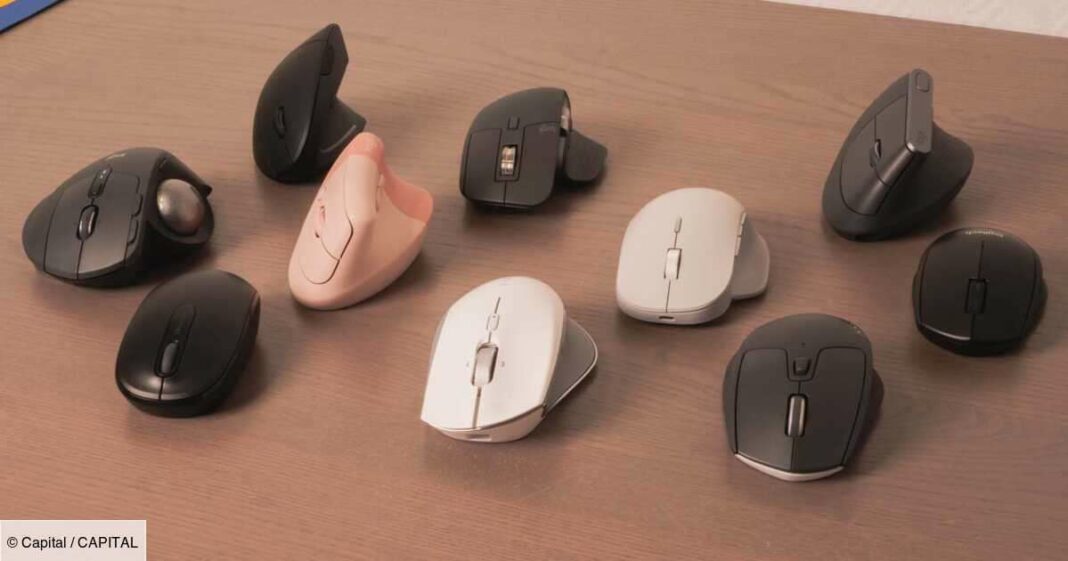Wireless mice offer advanced features beyond basic functionality, such as sensor accuracy, ergonomic design, comfort, battery life, and connectivity options. Significant improvements have been made in responsiveness and ergonomics. Recommended models include the Logitech MX Master 3S for its versatility, the Razer Pro Click for hybrid use, and the Logitech Lift for its vertical design. Key considerations when choosing a wireless mouse include shape, controls, connectivity, precision, compatibility, and portability.
Understanding Wireless Mice: Key Features to Consider
Wireless computer mice are intricate devices that offer more than just basic functionality. When selecting a wireless mouse, it’s essential to evaluate several factors, including sensor accuracy, ergonomic design (number of buttons, scroll wheel functionality), comfort, battery longevity, and connectivity options.
Historically, wireless mice faced criticism regarding connectivity issues, particularly the latency experienced by gamers. However, advancements in technology have greatly improved their responsiveness, making them nearly as precise as their wired counterparts. Ergonomically, these devices have also seen significant enhancements, with some models specifically designed to help prevent musculoskeletal disorders (MSDs). Gaming mice often feature customizable designs that allow for interchangeable buttons and adjustable weights to suit individual preferences.
Top Wireless Mice Recommendations
When it comes to finding the best wireless mice, experts have identified a few standout models:
- Logitech MX Master 3S: The ultimate wireless mouse.
- Razer Pro Click: The ideal hybrid mouse for both office and gaming use.
- Logitech Lift: The top choice for a vertical mouse.
Thorough Testing Procedures for Wireless Mice
To ensure reliable results, we implemented rigorous testing protocols across multiple criteria. Initially, we assessed comfort levels based on different hand sizes and grip styles (palm, claw, fingertip, or vertical). We weighed the mice and tested them on various surfaces, including paper, wood, carpet, glass, and stone, while also verifying compatibility with different operating systems.
Additionally, we evaluated connection speed and tracking accuracy (latency between mouse movement and pointer response). Our testing included everyday office tasks and simple gaming scenarios.
The Best Wireless Mouse: Logitech MX Master 3S
The Logitech MX Master 3S boasts a primary scroll wheel with both notched and fast scrolling options, complemented by a thumb wheel for horizontal scrolling. It features four customizable buttons and a USB-C charging port with an impressive battery life of up to 70 days. The Easy Switch function allows seamless switching between three devices.
Our tests highlighted its outstanding quality, although its larger size makes it more suitable for medium to large hands. The ergonomics provide a comfortable experience, making it a perennial favorite in the market.
The Best Hybrid Office/Gaming Mouse: Razer Pro Click
The Razer Pro Click is crafted for gaming enthusiasts but functions exceptionally well in office settings. It can connect to four different devices, features an optical resolution of 16,000 DPI for precise tracking, and offers an incredible battery life of 400 hours, recharging via micro-USB. It supports both Bluetooth pairing and a direct USB connection.
During our evaluations, we found this mouse lightweight and comfortable for all hand sizes regardless of grip style. Its movement was smooth, and it performed well on various surfaces, making it a versatile option for office tasks. The only downside is its micro-USB charging, as many users now prefer USB-C for convenience.
The Best Vertical Wireless Mouse: Logitech Lift
The Logitech Lift is unique due to its vertical design, promoting a more natural wrist position. It connects via Bluetooth or the Logi Bolt USB receiver and weighs 130 grams, ensuring easy maneuverability. This model is available for both right-handed and left-handed users and features a scroll wheel that can switch between precision and fast scrolling modes.
Our testing revealed quiet button operations and smooth wheel movement. We recommend this mouse primarily for users with small to medium-sized hands, as its laser sensor performs well on most surfaces, although it may struggle on glass.
Exploring the Logitech MX Ergo Trackball
This innovative wireless mouse features a trackball that allows cursor movement without wrist motion. It offers an adjustable tilt from 0 to 20 degrees and allows users to customize its weight between 167 and 262 grams.
We appreciated the quality craftsmanship during our tests, finding it ergonomic with effective software support. Its design minimizes wrist movement, but constant thumb engagement may cause discomfort over time. While it’s an excellent choice for users familiar with trackball technology, we do not recommend it for gaming purposes.
How to Choose the Right Wireless Mouse
Based on our expert insights, here are the essential factors to consider when selecting a wireless mouse:
- Shape and Ergonomics: Choose a mouse that fits your hand shape for optimal comfort and grip. Consider hand size and whether you’re right or left-handed. While many mice cater to right-handed users, options exist for left-handed and ambidextrous individuals. Weight is also crucial, as heavier mice can lead to wrist fatigue.
- Controls and Functions: Look for mice that allow for customizable user profiles and include multiple buttons to enhance productivity.
- Connectivity: Wireless mice with USB adapters typically offer better speed and reliability. Consider whether you prefer a USB dongle or direct Bluetooth connection and assess the wireless range, stability, and latency for a smooth experience. High-end models often provide a wired option to bypass battery issues.
- Precision: The level of precision required depends on your usage. DPI (Dots Per Inch) indicates sensitivity to movement; gamers generally favor higher DPI for improved accuracy.
- Compatibility: Ensure the mouse works with your operating system, as compatibility varies among Windows, MacOS, ChromeOS, Linux, and Android devices.
- Mobility: Opt for a lightweight, compact mouse for easy transport. Battery life is critical to avoid frequent interruptions, and a mouse that connects directly to your PC eliminates the need for a USB dongle.
